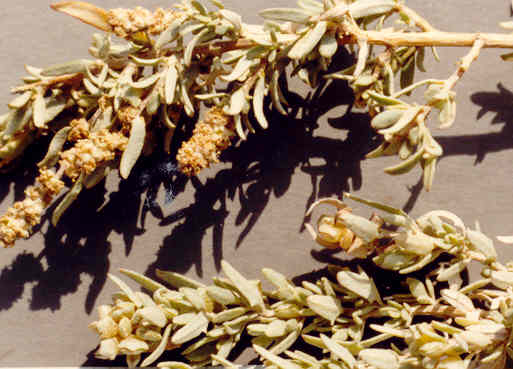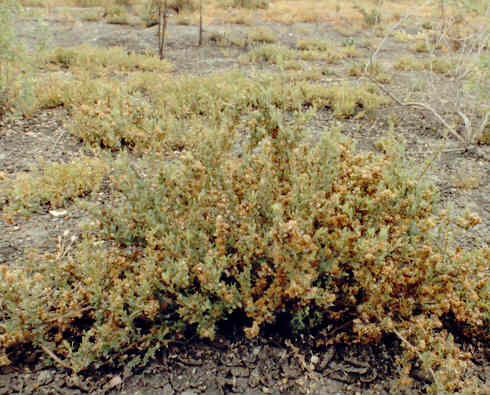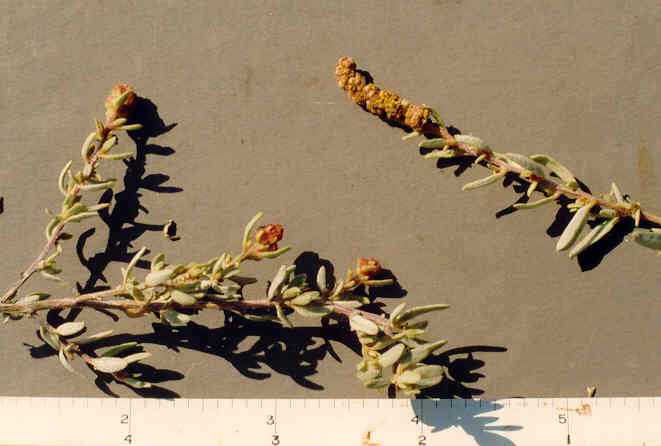
Atriplex rhagodioides F. Muell
= Atriplex nummularia S. Jacobs
Chenopodiaceae (Goosefoot Family)
Origin Unknown
 |
Atriplex rhagodioides F. Muell
= Atriplex nummularia S. Jacobs Chenopodiaceae (Goosefoot Family)Origin Unknown
Atriplex |
May Photo
Plant Characteristics:
Erect shrub, 2-4 dm. tall, gray scurfy, spineless; lvs. alternate, lower
10-17 mm. long, 2-4 mm. wide, oblong to lanceolate, some with tooth at leaf
base, petioled, scurfy both sides,
upper 6-8 mm. long, 2-3 mm. wide, lanceolate to linear lanceolate, without
teeth, petioled, the petiole of upper and lower lvs. 2-4 mm. long; plants both
dioecious and monoecious; staminate fls. in dense, naked terminal spikes,
pistillate in axillary clusters; fruiting bracts sessile or nearly so, rhombic,
5-8 mm. long, 5-7 mm. wide, inflated but not globose, united on lower half,
minutely pitted; seeds light brown. (my
description).
Habitat:
Victoria and New South Wales, Australia.
Blooms and
fruits in winter in California.
Name:
Atriplex, the ancient
Latin name. (Munz, Flora So. Calif. 352).
General:
Found only in Big Canyon where it appears to have been introduced at the
time the freshwater pond was built in the early 1980's.
The plant has become common in one section of the canyon.
This plant was unidentified until
2003 even
though it has been checked in the keys for Southern Australia, Central
Australia, the Soviet Union, Palestine, South Africa and Texas.
It is not listed in Flora Europea. The bracts are similar to those of A. semibaccata except they are not red in fruit.
One wonders where the people who supply these plants or their seeds, get
them. Also introduced with this Atriplex
were Encelia farinosa x californica, Centaurea
muricata and probably Nolana acuminata.
(my comments).
Text Ref:
None
Photo Ref:
May 2 87 # 17A, June-July 87 # 4; Feb-April 91 #6.
Genus identity: by R. De
Ruff.
First Found: May 1987.
Computer Ref: Plant Data 369.
Plant specimen donated to UC Riverside in 2004.
Last edit 8/4/05.
 |
 |